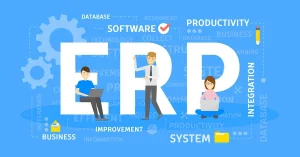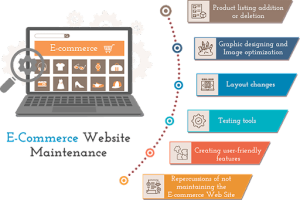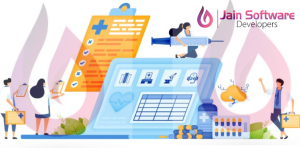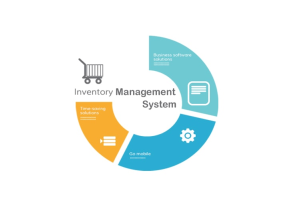The Benefits of Using Jain Software’s ERP in Hospital Management
In Business, Official BlogGiven the dynamic development of events and processes in the healthcare sector, the modern hospital and Medical Institutions experience a number of problems which include providing efficient solutions. Therefore, it appears that such a scale of 45 comprehensive tasks ranges from efficiently managing patient records, as well as administrative procedures, to compliance with legal requirements and effective use of resources in hospitals. There is no doubt that one of the most influential instruments which have demonstrated high effectiveness in the process of hospitals’ management is an ERP system. Jain Software is an IT solutions company and they present a modern ERP system that focuses on health care sectors. Here in this blog, you will come to know about the various advantages which can be obtained if the Management of a Hospital takes help of ERP by Jain Software.
Improved Health Industry and Customer Relations
The core purpose of existence of any healthcare institution is to be able to meet patient satisfaction. Several instances proved how Jain Software’s ERP system boosts patient care through efficiency of different procedures as well as new means of interdepartmental coordination. Centrally having patient data helps the healthcare givers to be up to date with patient data beginning from general health history to the most recent specialist and treatment plans, and laboratory results. Such easy access to information enables the doctors and nurses to make right decisions without much delay thus minimizing on mistakes that could result from delay in providing right treatment.
Also, the implementation of the ERP system improves patient care through solution tools that include online appointment booking, patient’s portal, and others associated with reminders. For the patients it means that scheduling an appointment, have access to their records, and receive necessary notifications become less time-consuming and more pleasant.
Efficient Resource Management
Resource management is one of the biggest struggles that healthcare, and consequently, the management of hospitals face. The ERP of Jain Software also emerges as a priority when it comes to the utilization of resources regardless it may be the medical supplies, equipment, or manpower. In this regard, through the provision of the information required for the management of the status of the available resources as well as resources in use, the ERP system empowers the administrators to efficiently organize the available resources. Thereby, minimizing wastage, cutting down the cost, and boosting the efficiency of operating the business.
For example, the system can order medical and necessary supplies for the clinic and reorder after a certain supply level is reached. To be precise, this stocking up is done foreseeing that some of the supplies may run out of stock, thus causing a halt in patient treatment. Furthermore, the use of the ERP system involves being able to organize the maintenance schedule of medical equipment; therefore, this could help reduce the time spent by the equipment out of commission and increase the usage lifespan of assets that are vital to the company.
Streamlined Administrative Processes
Frequent and time-consuming tasks such as data entry in the hospitals’ administration are tiring and can be error-prone if done manually. Several of these processes have been integrated within Jain Software’s ERP system and effectively relieves staff of having to do it manually. A lot of paper work like patient registration, billing, payroll, compliance reporting etc. are interrelated with the ERP system to optimize the results and chances of error are also excluded.
The System also yields strong reporting and analyze feature that allows administrators of the hospital to produce reports covering almost all facets of a hospital. They assist in decision making, evaluating strengths and weaknesses of an organization, and meeting the legal specifications.
Improved Financial Management
Financial management is very core in the health sector especially for any health care facility that intends to be sustainable. The above-highlighted ERP system provided by Jain Software includes many efficient financial management tools that can be of great use to the hospitals. It is an efficient method of consolidating financial information of all the departments in the hospital thus leading to a proper view of the general financial position of the hospital.
The functionalities such as automated billing and invoicing, claims management, and revenue cycle management by the ERP system simplify the financial processes and thus cuts down on cost and time. Such lead captures facilitate the determination of expenditure, evaluation of income and identification of prospective revenues trends within the hospitals hence befitting budgeting and predictions. Moreover, the system provides high degrees of security as far as financial information is concerned; hence, avoiding any malpractice mishap.
Legal and Regulatory Environment and Data Protection
To highlight, healthcare organizations are still bound by lengthy and specific legal statutes that govern the protection of patients’ demography and their records. ERP system in Jain Software is built with compliance consideration in mind to assist these hospitals to achieve these compliance requirements. Some of the options within the system include the audit trail, access control, and data encryption to guarantee that a patient’s information is secure and only accessible to some employees.
Through maintaining the compliance reports and records, ERP system helps the hospital in releasing the workload from human personnel. Concerning compliance regulation such as HIPAA, the ERP system assists the hospitals in avoiding fines and eradicating the undesirable reputation that may result from failures to adhere to the regulatory compliance.
Enhanced Communication and Collaboration
The fact is that the healthcare profession has to be effective as part of a team so that way great patient care can be achieved. Jain Software’s ERP system ensures that there is an effective communication between the various departments in ensuring that the healthcare practitioners deliver their work effectively. In particular, it is free from the use of paper and enables all practitioners that are engaged in the care of a certain patient to have fresh information in regards to delivering further treatment to that specific patient.
Besides the internal communication, the ERP system also impacts the organization with other major organizational sub-recipients including laboratories, pharmacies, and insurance companies. This makes the communication of information to the ERP system efficient since it eliminates some of the external system due to integration thus enhancing efficiency.
Scalability and Customization
There are different types of hospitals regarding to size, area of specialization and functionality. In terms of adaptation, Jain Software’s ERP system is also quite flexible, meaning that the company can implement it across the spectrum of healthcare organizations. In addition, the functionality of ERP can also be installed to fit the organizational need of a small clinic up to a multi-specialty hospital.
Another strength is that the system can be implemented in modules and a hospital can implement the ones that is relevant to it at that particular time and as the institution expands it can implement the other ones. This scalability helps the hospital to assign significant value of the ERP system in the future when the needs of the health enterprise are going to change.
Conclusion
In conclusion, it can be seen that ERP system provided by Jain Software is fairly elaborate and efficient to manage a hospital. As a result, the application of the ERP system improves efficiency in patient care, resource utilization, administrative and financial processes, as well as compliance with regulatory requirements and communication and collaboration among the institution’s departments. Jain Software’s Cloud based ERP also offers tremendous scalability and therefore has a great potential to stand as a strong partner in the transformation process needed towards delivering healthcare that is more efficient, effective and most importantly – patient centric.













